Key Points and Summary – The F-22 Raptor, the world’s most dominant fighter, is a ghost of the fleet America intended.
-The U.S. Air Force, originally wanting 750, saw the program slashed to just 186 planes.
-This strategic blunder was driven by the Cold War’s end, the program’s staggering cost, and a post-9/11 shift to counterinsurgency warfare.
-Led by figures like Robert Gates, Washington deemed the jet an expensive “Cold War relic” and shut down the production line.
Today, in a new era of great power competition with China and Russia, this short-sighted decision has left America with a dangerously small fleet of its best-ever fighter.
The Great F-22 Raptor Mistake Won’t Ever Get Better
In the ruthless hierarchy of the skies, there is the F-22 Raptor, and then there is everything else. And, in fact, I spent a little time with an F-22 Raptor at the U.S. Air Force Museum in Dayton, Ohio, back in July.
Pretty strange how a plane that almost no Air Force can build is sitting in a museum? In any case, I have photos of the visit included in this article.
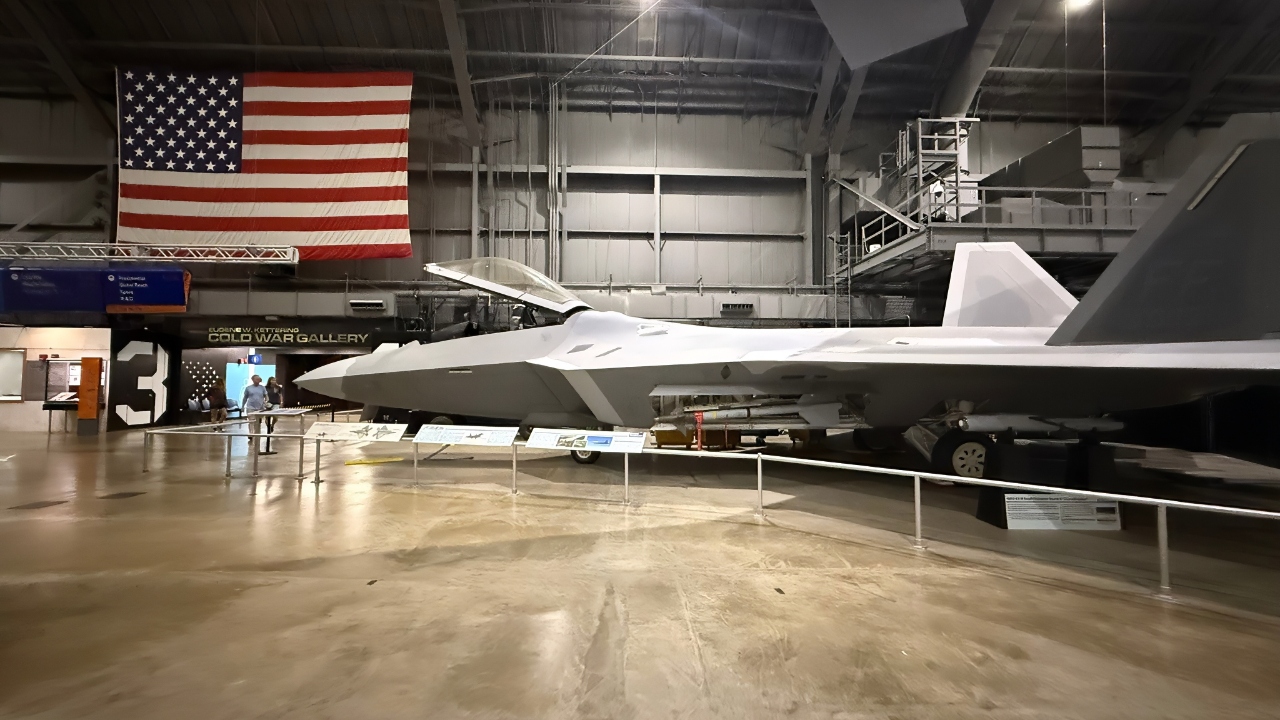
F-22 Resting at U.S. Air Force Museum. Image Credit: National Security Journal.
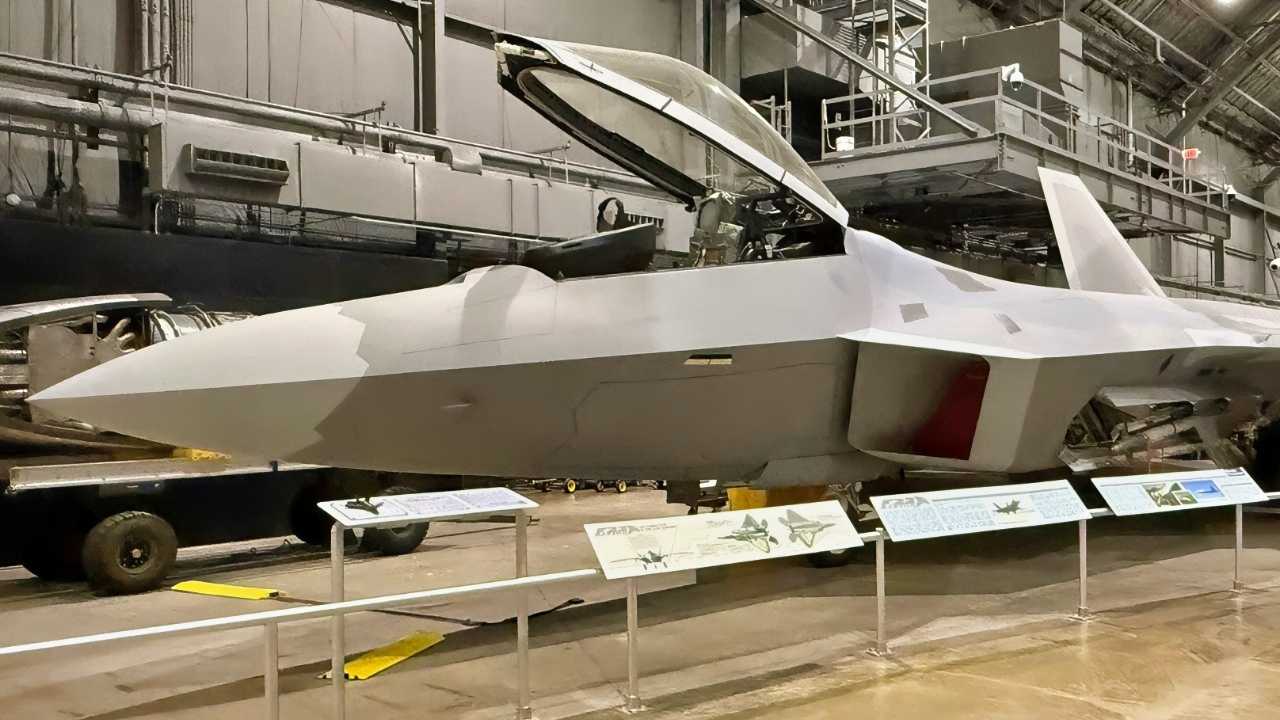
F-22A Raptor In Dayton, Ohio National Security Journal Photo.
But back to the business at hand: The F-22 Raptor is a machine that operates on a different plane of existence, a fusion of stealth, speed, and avionics so advanced that it remains the undisputed king of air-to-air combat, decades after its first flight. Its pilots speak of it with a reverence reserved for a mythological weapon. It is, without question, the most dominant air superiority fighter ever built, a weapon that guarantees control of the skies against any conceivable adversary.
And that is precisely why its story is one of the greatest strategic blunders of the modern era.
The F-22 Numbers Challenge
Today, the United States Air Force possesses just 186 of these incredible machines—a ghost fleet.
This is not some arbitrary number. It is the tragic end-product of a series of catastrophic miscalculations, a profound failure of imagination by leaders who, blinded by the fleeting priorities of their time, canceled a weapon they could not understand.
The Air Force, the service that conceived the Raptor, originally planned to build more than 750 of them. The story of how that number was whittled down to a precious, irreplaceable few is a painful lesson in how short-sighted “savings” can create a long-term strategic deficit that haunts a nation for decades.
This was not a single bad decision, but a slow-motion cascade of them. It was a failure born from the intoxicating optimism of the 1990s, the brutal re-prioritization of the 2000s, and a fundamental misunderstanding of what a “peer competitor” truly meant.
A Thoroughbred Built for a World of Dragons
To understand this mistake, you have to travel back in time to a different world.
The F-22 Raptor was not a product of the 21st century; it was a child of the 1980s, conceived at the absolute zenith of the Cold War.
The U.S. military was facing a Soviet Union that was fielding a new and genuinely terrifying generation of fighter aircraft, specifically the MiG-29 Fulcrum and the Su-27 Flanker.
These were not the clunky, downgraded export models the Soviets sold to their client states; these were highly agile, powerful aircraft that threatened to erase the technological edge our own F-15 Eagles and F-16 Vipers had long enjoyed.
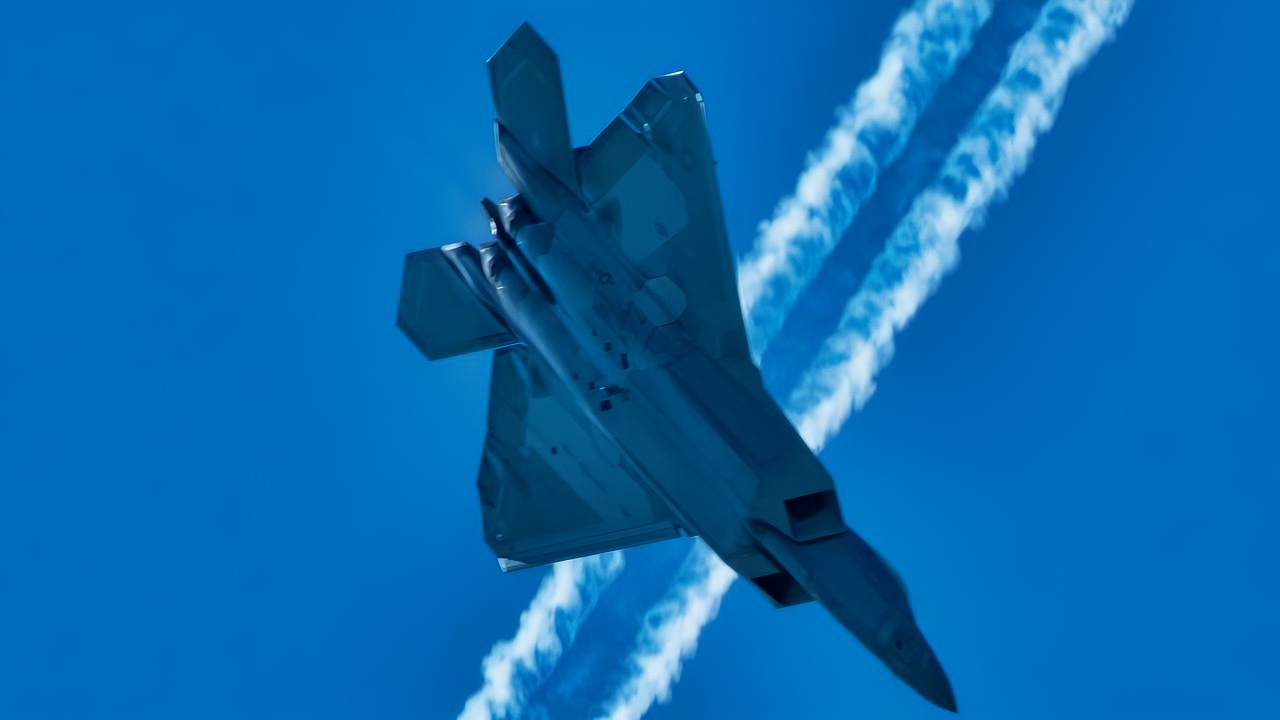
U.S. Air Force Maj. Josh Gunderson, F-22 Demonstration Team pilot, soars through the sky during a demonstration practice Feb. 27, 2020, at Davis-Monthan Air Force Base, Ariz. The Heritage Flight Training Course is a training course for all single-ship aerial demonstration teams prior to the upcoming summer air show season. (U.S. Air Force Photo by Captain Kip Sumner)
The Pentagon’s “Advanced Tactical Fighter” program, which began in 1981, was a response to this threat. The goal was not simply to build a better fighter. The goal was to build the last fighter, a weapon so advanced it would leap an entire generation ahead and render the entire Soviet air fleet obsolete.
It was to be a machine that combined stealth —so it could not be seen on radar —with supercruise —so it could fly at supersonic speeds without using a fuel-guzzling afterburner —and a revolutionary set of networked sensors that would allow its pilot to see the entire battlefield.
In this context, the Air Force’s original plan to buy 750 Raptors was not just logical; it was essential.
In a full-blown war with the Warsaw Pact, America and its NATO allies would have faced thousands of enemy fighters.
To win, we needed to dominate the skies over Europe, and 750 Raptors were deemed necessary to do so. The cost was staggering, yes, but the cost of losing a war in Europe was unthinkable. The F-22 was the silver bullet designed to kill a dragon.
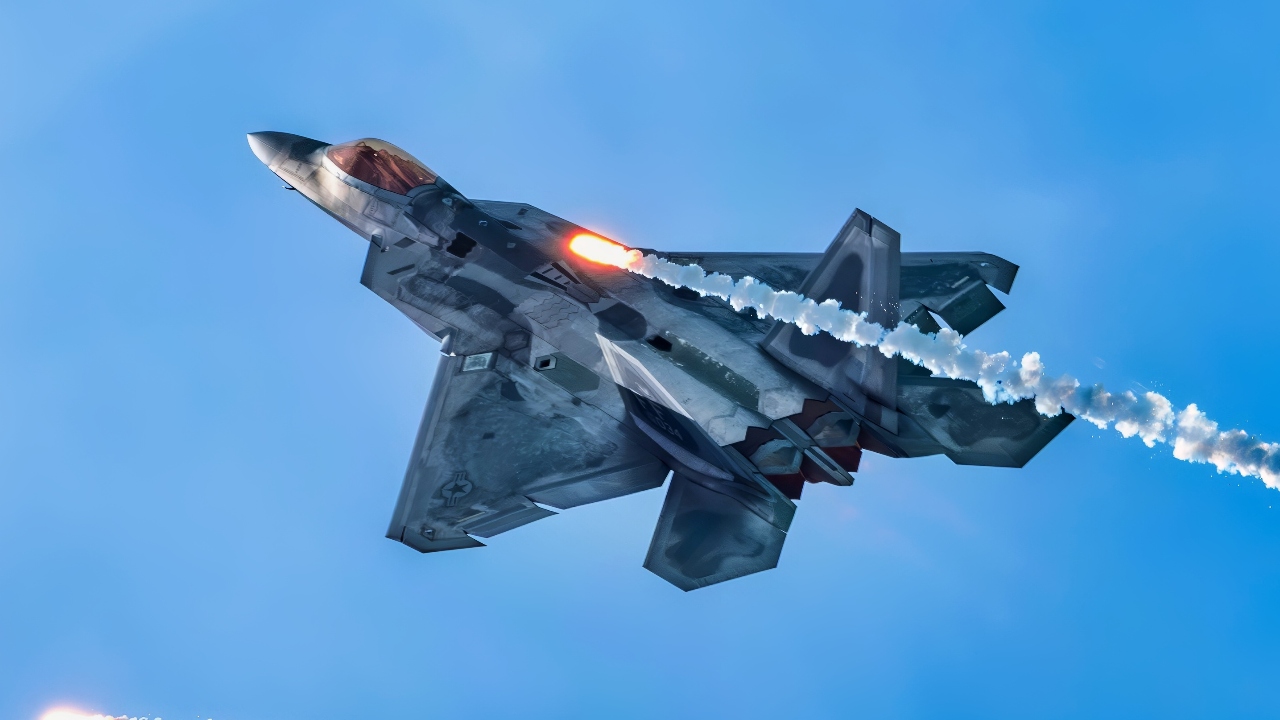
U.S. Air Force Capt. Nick “Laz” Le Tourneau, F-22 Raptor Aerial Demonstration Team commander, performs an aerial maneuver during the Cocoa Beach air show in Florida, July 12, 2025. The team joined the community in celebrating Cocoa Beach’s 100th anniversary, marking a century of coastal heritage and patriotic spirit, while showcasing the unmatched power, agility, and precision of America’s fifth-generation fighter and reinforcing public trust in the Air Force’s mission to fly, fight, and win. (U.S. Air Force photo by Staff Sgt. Lauren Cobin)
The Dragon Vanishes, and the “Peace Dividend” Arrives
Then, in 1989, the Berlin Wall came crashing down. In 1991, the Soviet Union itself, the very dragon the Raptor was designed to slay, dissolved. Suddenly, America was the lone superpower in a unipolar world.
The justification for a massive, exquisitely expensive fleet of air superiority fighters evaporated almost overnight. This was the era of the “peace dividend,” when politicians and policymakers believed that large-scale, high-tech warfare was a thing of the past.
The F-22 program was immediately on the chopping block. The 750-plane order was slashed. First to 648. Then to 442. Then again. Each cut felt rational at the time. Why, critics asked, did America need such an expensive fighter when its only potential adversaries were rogue states like Iraq or North Korea, whose air forces were flying obsolete, third-generation MiGs? The F-15 Eagle was already the undisputed king of the skies, undefeated in air-to-air combat. Surely it was more than good enough for this new, more peaceful world.
The program survived, but it was wounded. It was kept alive by a core group of advocates in the Air Force who understood that, while the current threat had vanished, the Raptor’s technology represented a capability that, once lost, could never be regained.
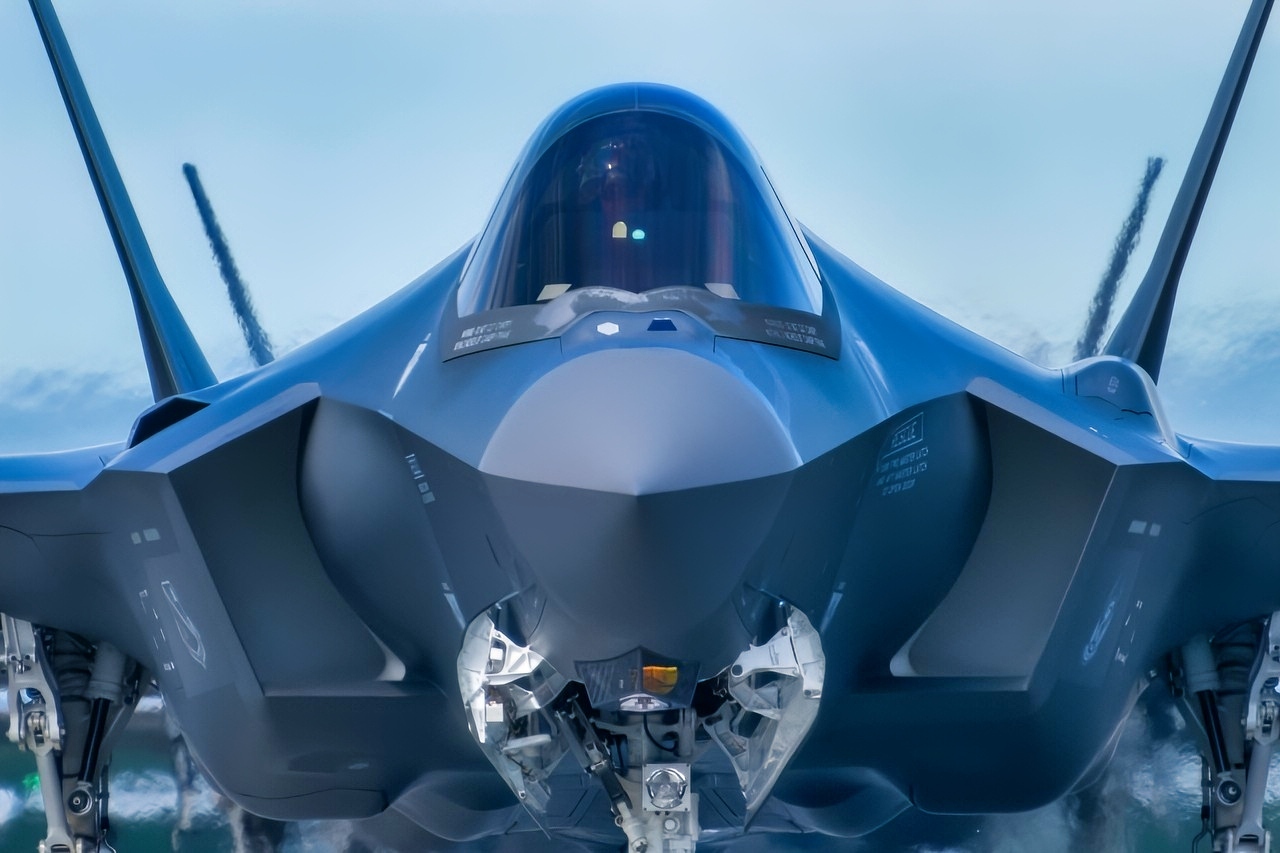
U.S. Air Force aircraft participate in a capabilities demonstration in honor of the U.S. Air Force’s 75th Anniversary at Eielson Air Force Base, Alaska, Aug. 12, 2022. Aircraft, including F-35A Lightning II, F-16 Fighting Falcon and F-22 Raptor aircraft, participated in the 75-fighter jet formation. (U.S. Air Force photo by Tech. Sgt. Timothy Moore)
They argued that it was a long-term investment in American air dominance. But they were fighting against a powerful tide of budget-cutting and a new, optimistic worldview.
The 9/11 Pivot: A Thoroughbred in a World of Mules
On September 11, 2001, the world changed again, and in a way that would ultimately prove to be the F-22’s death knell. The new enemy, Al-Qaeda, did not have an air force. It had no tanks, no navy, and no advanced surface-to-air missiles. The new “Global War on Terror” was not a high-tech sprint; it was a low-tech, grinding marathon of counter-insurgency, known as COIN. The new battlefields were the mountains of Afghanistan and the streets of Iraq.
In this new kind of war, the F-22 was a solution to a problem that no longer existed. It was a $150 million-dollar thoroughbred racehorse, and the Pentagon was suddenly in the business of hauling supplies with pack mules. The heroes of this new war were platforms that could loiter, not sprint. They were A-10 Warthogs, MQ-9 Reaper drones, and heavily armored trucks known as MRAPs.
Robert Gates and the F-22 Cut
This new reality found its most powerful and articulate champion in Robert Gates, who became Secretary of Defense in 2006. Gates was a pragmatist, a man laser-focused on winning the wars the U.S. was actually fighting, not the wars it might fight in some hypothetical future. And he looked at the F-22 with open disdain. He famously and repeatedly pointed out that the most expensive fighter in the world had not flown a single combat sortie in Iraq or Afghanistan.
To him, it was the ultimate “Cold War relic,” a symbol of a Pentagon bureaucracy obsessed with exquisite, gold-plated toys while troops were dying on the ground for lack of basic counterinsurgency equipment.
This logic was seductive and, in the moment, almost impossible to argue against. Every dollar spent on a Raptor, Gates argued, was a dollar not spent on a drone or an armored vehicle that could save American lives today.
He also had a powerful argument for a replacement: the F-35 Joint Strike Fighter. The F-35 was, on paper, the perfect solution. It was a “jack-of-all-trades” multi-role fighter. It had stealth, advanced sensors, and, most importantly, it was cheaper (or so it was promised) and could be built in the thousands to replace a half-dozen different aging aircraft.
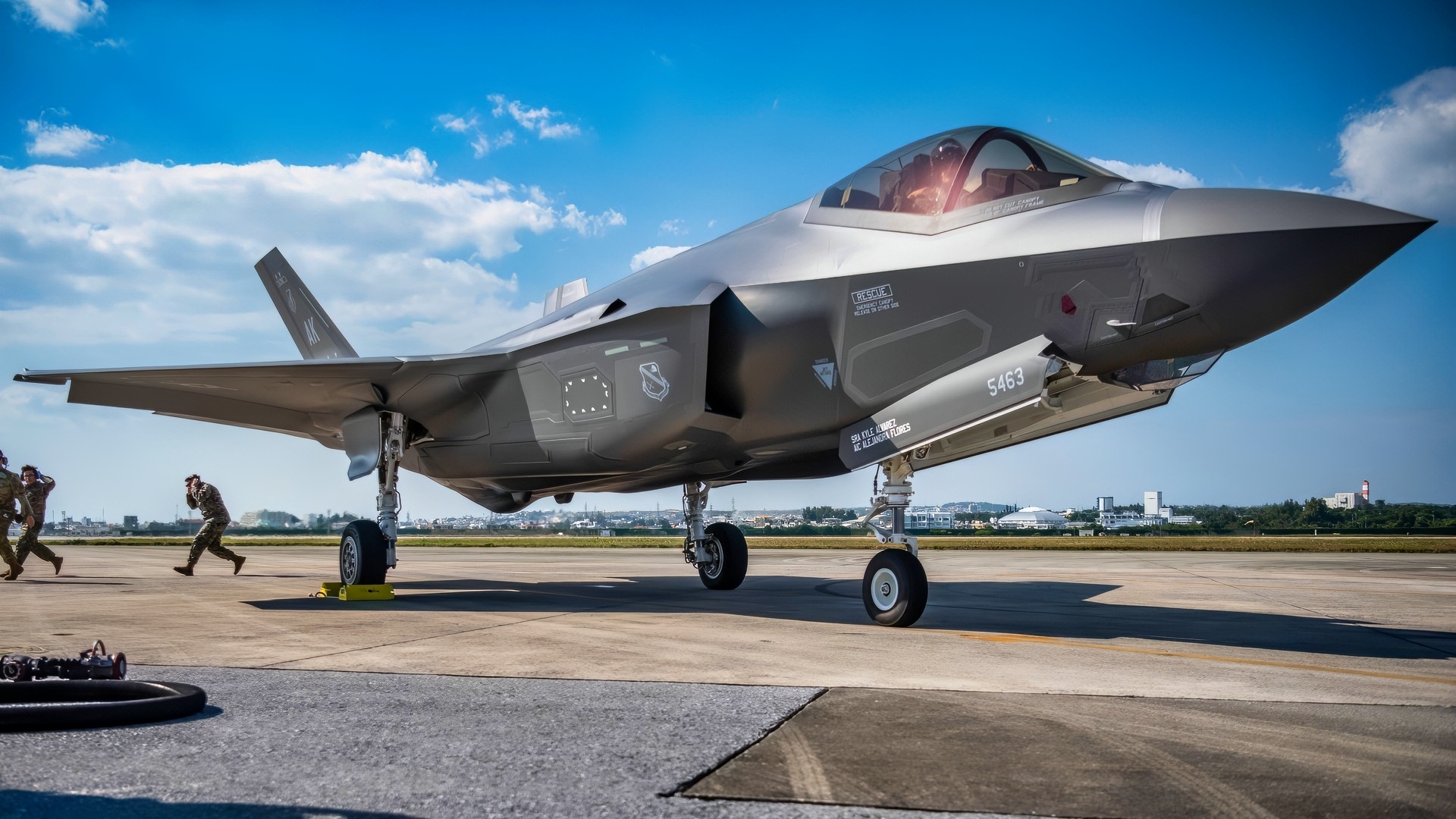
A U.S. Airman and two U.S. Marines support an F-35A Lightning II during joint hot pit refueling training at Kadena Air Base, Japan, March 10, 2022. Hot pit refueling uses a single-point refuel pump, which allows an aircraft to be rapidly refueled immediately after landing, while the engine is running. This cuts down on response time and ensures the mission can be completed anytime, anywhere. (U.S. Air Force photo by Airman 1st Class Anna Nolte)
The F-35 became the “good enough” alternative that made canceling the “too perfect” F-22 politically palatable.
The Final Cut and the “Death Spiral”
By the time the Obama administration came into office in 2009, the fate of the F-22 was all but sealed. The program had entered a classic “death spiral.” This is a phenomenon that is the grim, bureaucratic reality of defense procurement.
The immense cost of developing a new weapon—the research, the testing, the factory tooling—is a fixed number. In the F-22’s case, it was tens of billions of dollars.
When you spread that fixed cost over the original 750 planes, the “program acquisition cost” per plane is high, but manageable. But when you slash that order to 300 planes, that same massive research bill is now divided by a much smaller number. The cost for each individual jet goes sky-high.
When the F-22’s program cost approached $350 million per aircraft, it became a political orphan. Congress, facing a global financial crisis and the soaring costs of two wars, saw a weapon that was not only irrelevant to the current fight but was also devouring the defense budget.
In 2009, Secretary Gates made it official. He announced that the Pentagon would cap the F-22 purchase at just 187 airframes (186 production models plus one test aircraft). The production line at Lockheed Martin’s Marietta, Georgia, plant would be shut down. The specialized tooling would be packed and stored (there is an online debate that the tools were lost, but this article is not about that; worth noting, though).
It was a final, irreversible decision. In the name of fiscal responsibility and relevance, America had voluntarily mothballed the single greatest air superiority weapon ever created.
The Reckoning: A Ghost Fleet for a New Cold War
And now, here we are. The wars in Iraq and Afghanistan are over. The era of counter-insurgency has given way to a new, far more dangerous era: the return of Great Power Competition.
A new dragon has risen, not in Moscow, but in Beijing. China, a nation with vast wealth and boundless ambition, has spent the last 20 years building a military designed for one purpose: to defeat the United States in the Pacific.
And what is the centerpiece of its new air force? The Chengdu J-20 Mighty Dragon, a heavy, long-range stealth fighter designed with the express purpose of challenging the F-22. Russia, too, is fielding its own fifth-generation jet, the Su-57 Felon.
We are now, today, facing the exact high-end, peer-to-peer threat that the F-22 was conceived to annihilate. And we have just 186 of them.
The catastrophic short-sightedness of that 2009 decision is now painfully clear. Of those 186 planes, only around 120 to 130 are “combat-coded” or mission-capable at any given time.
The rest are used for training or are in deep maintenance, though there is also an effort to transform these F-22 Raptors into combat-coded fighters.
This “boutique fleet” is stretched to the breaking point, forced to cover the entire globe. Restarting the production line is a fantasy; a 2017 Air Force report estimated the cost would exceed $50 billion. We are stuck with what we have.
The F-22 Raptor Challenge is a Math Problem
We possess the greatest fighter in the world, a machine that ensures victory in the air against anything our adversaries can or will field for decades. And thanks to our own profound lack of foresight, we don’t have enough of them.
That is a strategic blunder of historic proportions, and we will be paying the price —in risk and in treasure —for decades to come.
About the Author: Harry J. Kazianis
Harry J. Kazianis (@Grecianformula) is Editor-In-Chief and President of National Security Journal. He was the former Senior Director of National Security Affairs at the Center for the National Interest (CFTNI), a foreign policy think tank founded by Richard Nixon based in Washington, DC. Harry has over a decade of experience in think tanks and national security publishing. His ideas have been published in the NY Times, The Washington Post, The Wall Street Journal, CNN, and many other outlets worldwide. He has held positions at CSIS, the Heritage Foundation, the University of Nottingham, and several other institutions related to national security research and studies. He is the former Executive Editor of the National Interest and the Diplomat. He holds a Master’s degree focusing on international affairs from Harvard University. Email Harry: [email protected].
More Military
How an F-16 Fighter Barely Dodged 6 Surface-to-Air Missiles
The Mach 2.15 F-111 Aardvark Has a Message for the U.S. Air Force
The U.S. Army’s Bradley Fighting Vehicle Has a Message for Any Military On Earth
The U.S. Navy’s Great Missile Shortage
The F-14 Tomcat U.S. Navy Fighter Has A Message for Any Military On Earth











Question Authority
October 29, 2025 at 1:07 pm
This perfectly illustrated how short-sighted bureaucrats can destroy the far-sighted approach in planning. I still think production should have been restarted, but by that point, the Pentagon brass who helped create technological lethargy and short-sightedness, had their daggers out to make sure the F-22 beast was dead, once and for all. Besides, they had far more money they wanted to waste on things like the Littoral combat ships.
George Baggs
October 31, 2025 at 11:13 am
I remember that soon after Gates canceled the F22 production, China rolled out its J-20 during a state visit to China by US representatives (I recall Gates was one of them). It was the ultimate trolling move by the CCP.
Frank
November 4, 2025 at 10:13 am
And still, the light did not come on in his head, that, killing the F-22 might not be a great idea. Same with the Navy, kill the Tomcat and Intruder with nothing to replace with. Now we have no naval aircraft capable of deep strike.The war with China, when it comes is going to be a real eye opener.
Fidel Ramos
November 5, 2025 at 12:34 am
The politicians in Washington never learn their lessons in history. During the Vietnam war the politician bureaucrats decided not to put guns on the F4 Phantom for dog fighting and that missiles is all the F4 Phantom needed to fight an air war. That was a deadly mistake when the MiG 19 30mm cannons got close with the F4 to shoot down many F4 Phantoms. The MiG 21 with 30mm cannons and air to air missiles destroyed many F4s that cannot dog fight due to not having guns.